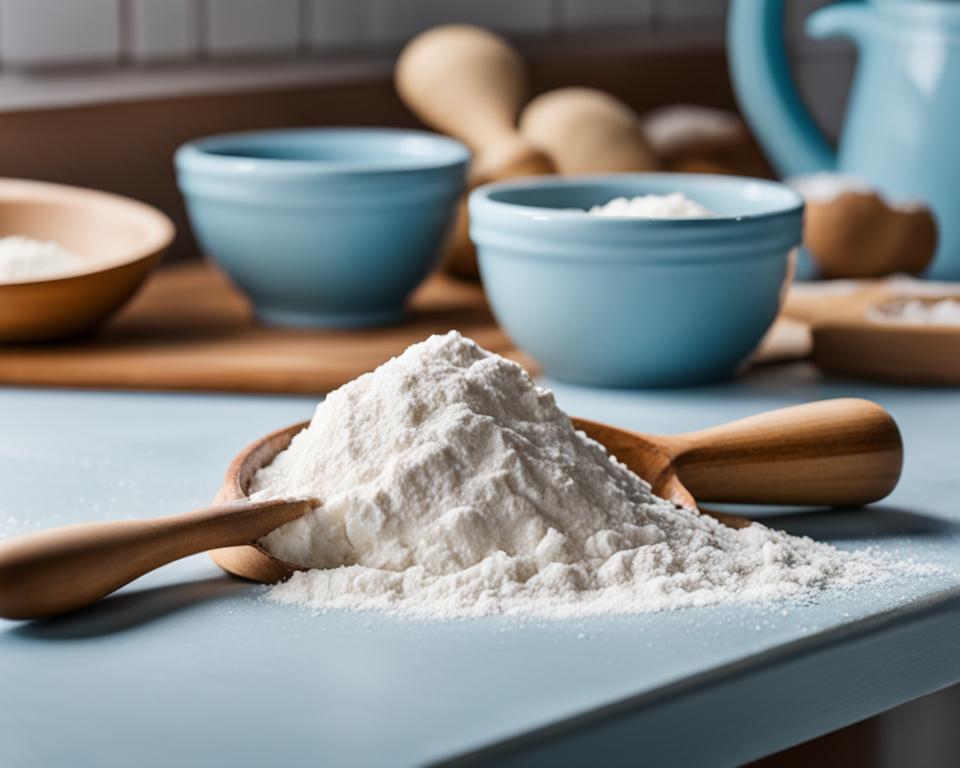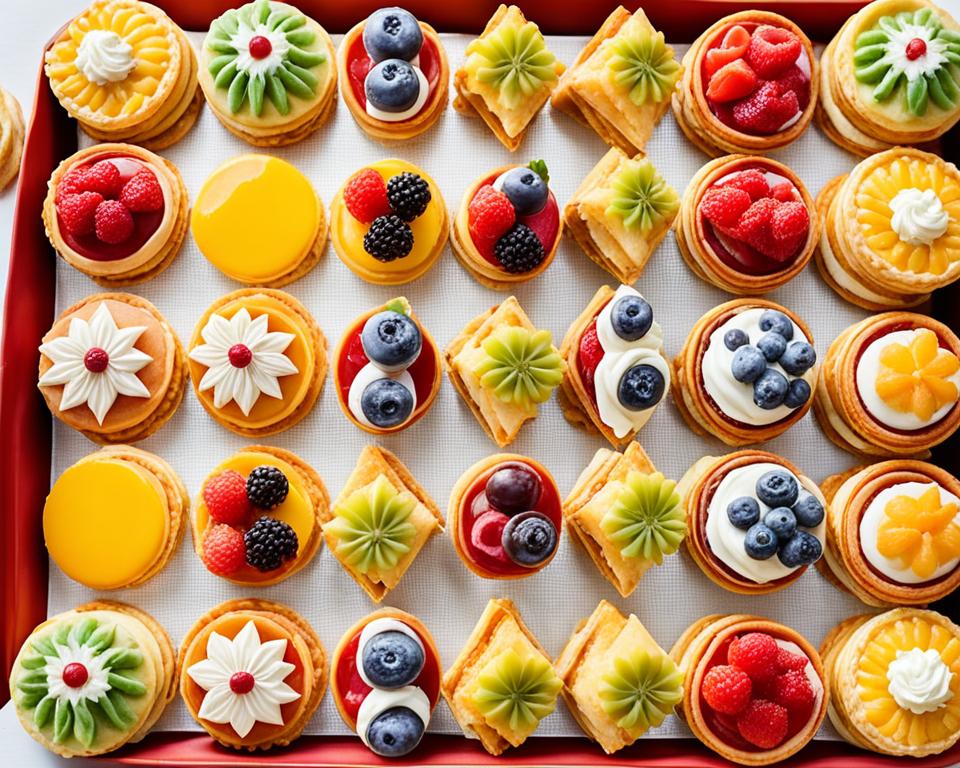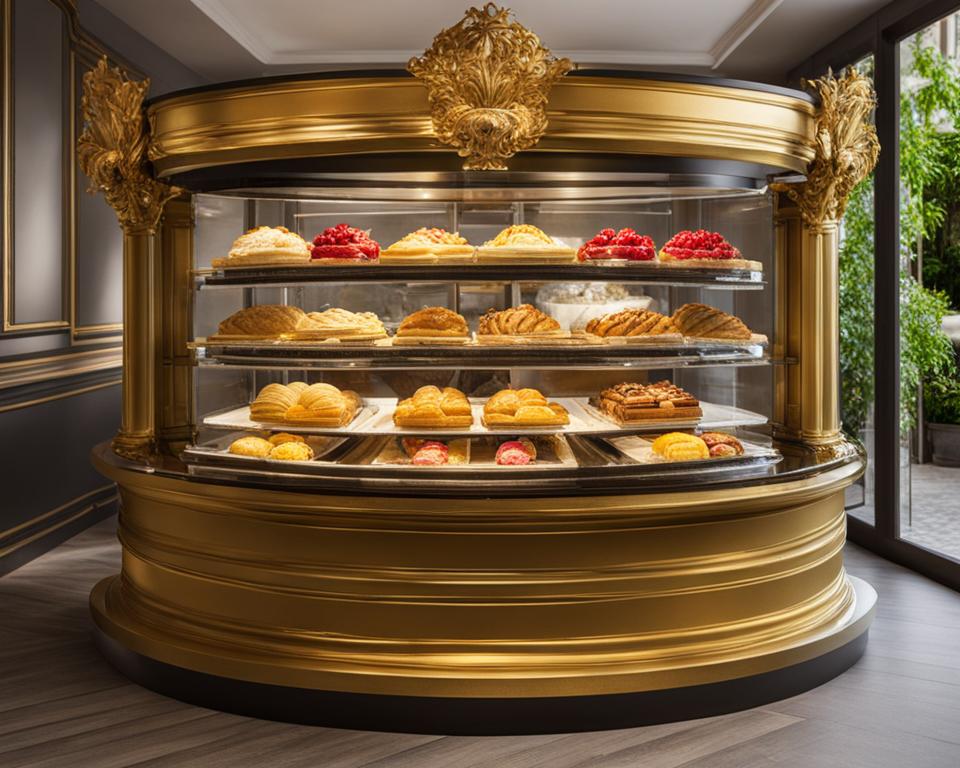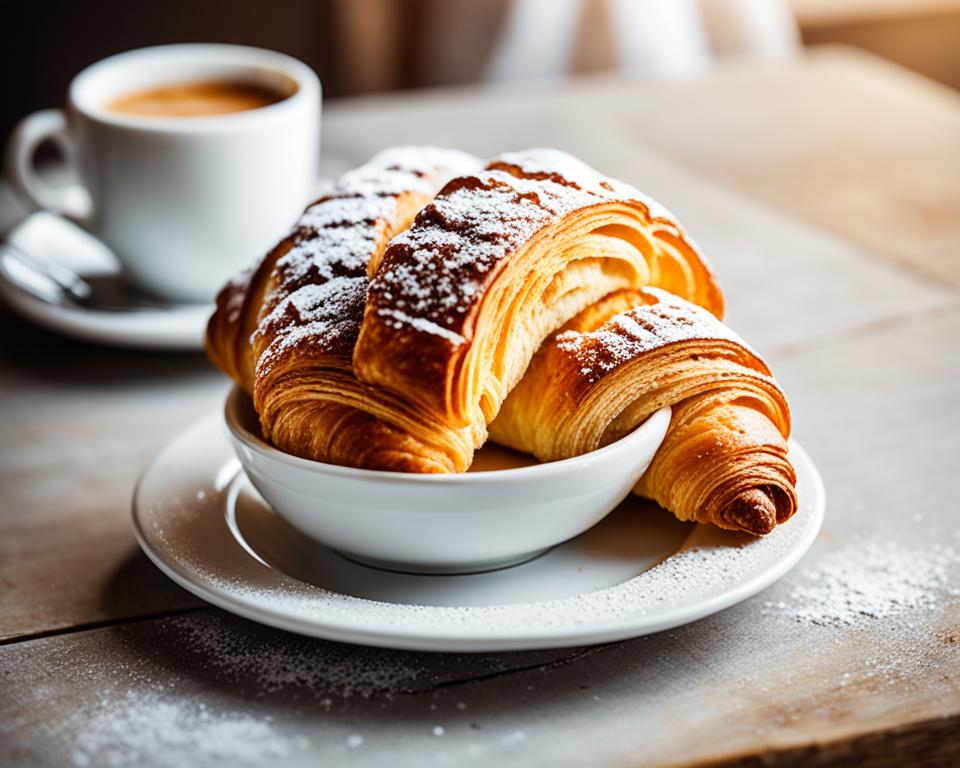Whether you’re a beginner or looking to improve your baking skills, these easy baking tips will help you get started on your baking journey. Baking can be a fun and rewarding hobby, but it can also be intimidating for beginners. With the right tips and techniques, you’ll be able to create delicious baked goods in no time. Let’s dive into the world of baking and explore these beginner-friendly baking advice.
Key Takeaways:
- Learn basic baking skills to build a strong foundation.
- Follow step-by-step baking guides to ensure success.
- Use simple baking recipes to practice and gain confidence.
- Invest in beginner baking essentials to make the process easier.
- Discover easy baking techniques and hacks to save time and effort.
Take Your Time and Be Prepared
One of the most important baking tips for beginners is to take your time and be prepared. Baking is a precise science, and rushing through the process can lead to disastrous results. Before you start baking, make sure you read the recipe thoroughly and gather all your ingredients and equipment. Preheat your oven, grease your pans, and measure your ingredients accurately. Being prepared and organized will set you up for success in your baking journey.
When it comes to baking, preparation is key. Take the time to properly measure and weigh your ingredients, ensuring that you have everything you need before you begin. Prepping your ingredients means washing and cutting fruits, sifting dry ingredients, and ensuring that your butter and eggs are at room temperature. By prepping ahead of time, you’ll be able to focus on the baking process without any last-minute surprises.
Another important aspect of being prepared is preheating your oven. Most recipes will specify the required oven temperature, so make sure to preheat your oven to the recommended temperature before you start baking. This allows your baked goods to bake evenly and properly.
In addition to preheating your oven, it’s crucial to grease your pans thoroughly. This will prevent your baked goods from sticking to the pan and make it easier to remove them once they are baked. Use butter, oil, or cooking spray to grease the pans, ensuring that every nook and cranny is coated.
By taking your time and being prepared, you’ll be able to enjoy the process of baking and produce delicious treats every time. So, before you put on that apron, gather your ingredients, preheat your oven, and grease your pans. Happy baking!
Measure Ingredients Properly
Properly measuring ingredients is crucial in baking. Unlike cooking, where you can often eyeball measurements, baking requires precise measurements to achieve the desired results.
When it comes to measuring ingredients, there are two main methods: weight and volume. Let’s explore the differences and best practices for each:
Weight Measurements
Investing in a digital kitchen scale is highly recommended, especially for measuring dry ingredients. Weight measurements provide a higher level of accuracy and consistency in your baking.
Here’s how to measure ingredients by weight:
- Place your mixing bowl on the scale and zero it out.
- Add the desired ingredient until you reach the specified weight.
Using weight measurements ensures that you add the precise amount of each ingredient, resulting in consistent and delicious baked goods.
Volume Measurements
Volume measurements are commonly used in baking and involve using cups, spoons, and other volumetric tools to measure ingredients.
Here are some tips to measure ingredients by volume:
- Use dry measuring cups for dry ingredients like flour and sugar. Fill the cup to the rim and level it off with a straight edge for accuracy.
- For liquids, use a liquid measuring cup placed on a flat surface. Read the measurement at eye level for accuracy.
- When measuring small amounts with spoons, fill the spoon and level it off with a knife.
Remember, when using volume measurements, it’s essential to level off the ingredients to avoid adding too much or too little. This ensures consistency in your baked goods.
Expert Tip: Weight vs. Volume Measurements
“While both weight and volume measurements have their merits, weight measurements provide more accuracy and precision. However, if you don’t have a kitchen scale, using volume measurements can still yield good results when done properly.”
Now that you know how to measure ingredients properly, you’re one step closer to becoming a confident baker. Whether using weight or volume, accurate measurements will ensure consistent and delicious results every time you bake.
Follow the Recipe and Avoid Substitutions
When it comes to baking, following the recipe is key, especially for beginners. Baking is a precise science, and recipes have been meticulously developed and tested to ensure the best possible results. By closely adhering to a well-tested recipe, you can save yourself from unnecessary experimentation and achieve delicious baked goods with consistency.
It’s important to understand that ingredient substitutions can significantly impact the outcome of your baked goods. Different ingredients have distinct properties, such as moisture content, leavening abilities, and flavor profiles. Substituting ingredients without the necessary knowledge and experience can lead to undesirable results.
Instead of deviating from the recipe, focus on finding recipes that suit your taste preferences and dietary restrictions. There are numerous beginner-friendly baking resources available that provide well-tested recipes. These recipes have undergone rigorous trials, ensuring that they produce reliable and delicious results every time you bake. Save ingredient substitutions for when you have a greater understanding of how they will affect the final product.
Benefits of Following a Recipe
Following a recipe has several advantages for beginner bakers:
- Consistent Results: Recipes provide step-by-step instructions, ensuring that you execute each baking process with precision. This consistency leads to reliable and consistent results every time.
- Learning Opportunities: By following a recipe closely, you can observe and understand the techniques used in baking. This allows you to develop your skills and expand your knowledge of baking fundamentals.
- Confidence Building: Successfully following a recipe gives you a sense of accomplishment and boosts your confidence in the kitchen. As a beginner, this confidence is essential for taking on more complex baking projects.
Common Ingredient Substitutions
| Original Ingredient | Possible Substitution |
|---|---|
| All-Purpose Flour | Whole Wheat Flour, Gluten-Free Flour Blends |
| Butter | Margarine, Vegetable Oil, Coconut Oil |
| Granulated Sugar | Brown Sugar, Honey, Maple Syrup |
| Milk | Almond Milk, Soy Milk, Coconut Milk |
| Baking Powder | Baking Soda + Acidic Ingredient (Buttermilk, Yogurt) |
Remember, as you gain more experience and confidence in your baking skills, you can start exploring ingredient substitutions. However, always keep in mind that even small changes can significantly impact the final outcome. So, until you have a solid foundation, embrace the art of following recipes and enjoy the journey of mastering the baking essentials.
“Recipes are like a roadmap for baking success. Follow them closely, and you’ll reach your destination of delightful treats every time.” – Unknown
Pay Attention to Temperature
Temperature is a crucial factor to consider when it comes to baking. By paying close attention to temperature, you can achieve consistent and delicious results in your baked goods. Here are some important points to keep in mind:
Room Temperature Ingredients
Using ingredients at the right temperature is key to achieving the desired texture and consistency in your batters. Ingredients such as eggs and butter are often best used at room temperature. When these ingredients are at room temperature, they emulsify better and create smoother batters. Before using them, make sure to bring eggs and butter to room temperature by leaving them out for about 30 minutes. This simple step can make a big difference in the outcome of your baked goods.
Preheating the Oven
Another important aspect of temperature control in baking is preheating your oven. Preheating ensures that the oven reaches the correct temperature before you introduce your batter or dough. This step is crucial for even baking and proper rising. Follow the recipe’s instructions for the recommended oven temperature and preheat your oven accordingly. This will ensure that your baked goods bake evenly and have the desired texture.
Ingredient Order
The order in which you add ingredients can also affect the final outcome of your baked goods. Some recipes may require you to add ingredients in a specific order to achieve the desired texture and structure. For example, in a cake recipe, you might be instructed to cream the butter and sugar together before adding other liquid or dry ingredients. This step helps to incorporate air into the batter and create a light and fluffy texture. Always follow the recipe’s instructions regarding ingredient order to achieve the best results.
Get to Know Your Oven
Every oven is different, and understanding its quirks is essential for successful baking. By getting to know your oven, you can create a consistent baking environment and achieve delicious results every time. Here are some tips to help you become familiar with your oven:
- Invest in an oven thermometer: An oven thermometer is a handy tool that allows you to accurately measure the temperature inside your oven. This will help you identify any hot spots or variations in heat distribution, ensuring that your baked goods are baked evenly.
- Record hot spots: Once you know where the hot spots are in your oven, you can adjust your baking strategy accordingly. For example, if the back of your oven is hotter than the front, you can rotate your pans halfway through baking to ensure even cooking.
- Make necessary temperature adjustments: If you find that your oven runs hotter or cooler than the temperature indicated on the dial, you can make the necessary adjustments. For example, if your oven runs 10 degrees hotter, you can set the temperature 10 degrees lower to achieve the desired baking temperature.
- Monitor baking times: Different ovens may require slight adjustments in baking times. Keep a close eye on your baked goods during the baking process and make note of any variations compared to the recipe’s suggested baking times. This will help you develop a better understanding of how your oven works.
By taking the time to get to know your oven and making any necessary adjustments, you can create a consistent baking environment and achieve fantastic results with your baked goods. Remember, practice makes perfect, so don’t be afraid to experiment and fine-tune your baking techniques!
Expert Tip:
“Understanding your oven’s unique characteristics is key to becoming a confident baker. Don’t rely solely on the oven’s built-in temperature settings; invest in an oven thermometer for precise temperature control.” – Chef Emily Johnson
Avoid Excessive Oven Door Opening
When it comes to baking, it’s important to resist the temptation of constantly opening the oven door to check on your progress. While it may be tempting to peek at your baked goods, this should be avoided as much as possible. When you open the oven door, heat escapes, causing temperature fluctuations that can negatively impact your baking.
Temperature stability is crucial for successful baking, as it ensures even heat distribution and consistent results. When you open the oven door, the hot air rushes out, and the temperature inside drops rapidly. This sudden change can affect the baking progress, leading to unevenly cooked or collapsed baked goods.
Instead of constantly opening the oven door, there are better ways to monitor the progress of your baked goods. Most ovens have a built-in window and light that allow you to keep an eye on your creations without disrupting the baking process. Utilize these features to check the color and rise of your baked goods.
Performing the Doneness Test
When you believe your baked goods are ready, perform the necessary tests to check for doneness without excessively opening the oven door. Different baked goods require different testing methods. Here are a few examples:
- For cakes, insert a toothpick or cake tester into the center of the cake. If it comes out clean or with just a few crumbs clinging to it, the cake is done.
- For bread, tap the bottom of the loaf. If it sounds hollow, it’s fully baked.
- For cookies, gently touch the edges. If they are firm and golden brown, the cookies are ready to be taken out of the oven.
By utilizing the appropriate doneness tests, you can ensure that your baked goods are cooked to perfection without compromising the baking process. Remember, patience is key, and avoiding excessive oven door opening will lead to better baking results.
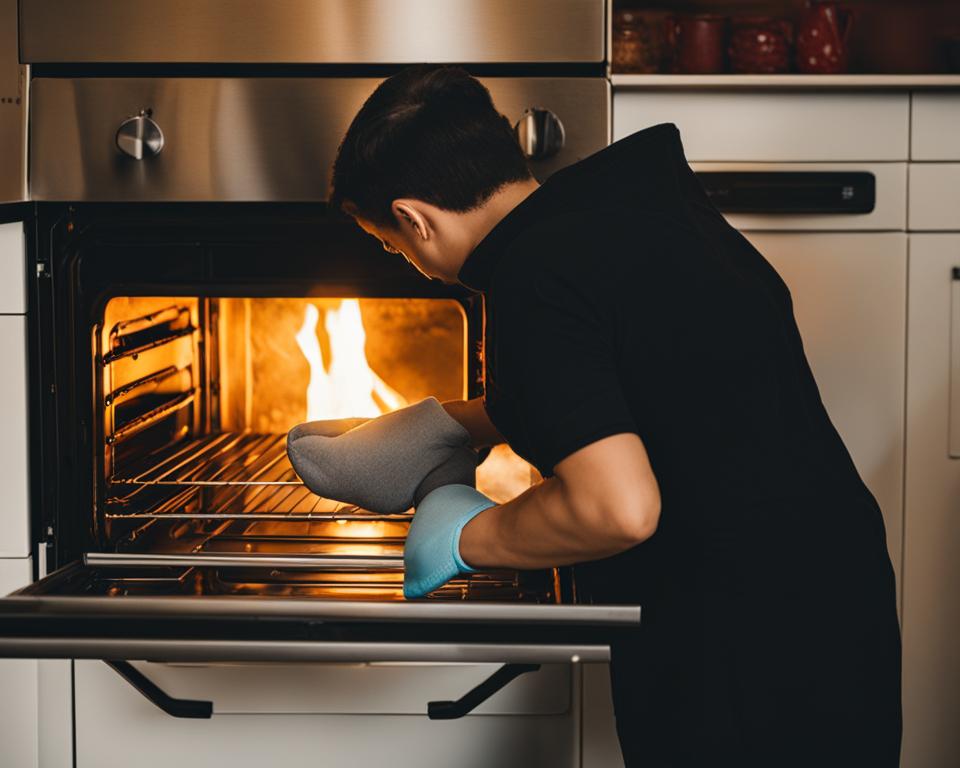
Understand the Difference Between Warm and Hot Ingredients
When it comes to baking, understanding the difference between warm and hot ingredients is essential for achieving the best results. Using ingredients at the correct temperature can greatly impact the texture and overall success of your baked goods. So, let’s dive into the importance of ingredient temperature and how it can affect your baking adventures.
When a recipe specifically calls for warm ingredients, it’s important to know what “warm” means in the context of baking. Warm ingredients should be at a temperature that is comfortable to touch, similar to the warmth of a baby bottle or a bedtime glass of milk. This gentle warmth helps ingredients blend together smoothly and evenly, resulting in a cohesive batter or dough.
On the other hand, using hot ingredients in your baking can lead to undesirable outcomes. Hot ingredients can cause curdling, scrambling, or a loss of effectiveness in certain ingredients. For example, adding hot melted butter to eggs can cause them to cook prematurely, resulting in a lumpy or grainy texture. Similarly, using hot milk in certain recipes can negatively affect the rise of yeast dough.
It’s important to pay attention to the recipe’s instructions regarding ingredient temperature and ensure you’re using the correct temperature for optimal results. If a recipe calls for warm ingredients, take the time to warm them to the appropriate temperature using gentle heat sources such as stovetops, microwaves, or warm water baths. Heating ingredients too quickly or to extremely high temperatures can lead to unintended consequences.
Pro Tip: If you’re uncertain about the proper temperature for a specific ingredient, consult reliable baking resources or reach out to experienced bakers for guidance. Don’t be afraid to ask for help when needed!
To summarize, understanding the difference between warm and hot ingredients is crucial for successful baking. Pay attention to the recipe’s instructions regarding ingredient temperature and ensure you’re using the correct temperature to achieve the desired texture and overall outcome of your baked goods.
| Warm Ingredients | Hot Ingredients |
|---|---|
| Comfortable to touch | Can cause curdling or loss of effectiveness |
| Blend smoothly and evenly | Can lead to undesired outcomes |
| Enhance cohesion in batter or dough | May affect texture or rise |
Choose the Right Baking Pans
The choice of baking pans can have a significant impact on your baked goods. To ensure successful baking, it’s important to select the right type of pan for your recipe. Consider the following options:
Nonstick Bakeware
Investing in high-quality nonstick bakeware is a wise choice for beginners. Nonstick pans allow for easy release of your baked goods, preventing them from sticking to the pan. This feature is especially beneficial when working with delicate pastries or cakes.
Metal Pans
Metal pans are a popular choice for most baked goods due to their excellent heat conductivity. They distribute heat evenly, promoting consistent and thorough baking. Metal pans are particularly suitable for cookies, cupcakes, and bread.
Glass or Ceramic Pans
Glass or ceramic pans are great alternatives to metal pans. However, they may require adjustments in baking time and temperature. Glass and ceramic provide slower and more even heat distribution, making them ideal for casseroles and custards. Follow the recipe’s recommendations for pan type and make any necessary adjustments based on the type of pan you’re using.
Remember, choosing the right baking pans is an essential step in achieving the perfect bake. Consider the recipe’s requirements and your own preferences to make the best choice for your creations.
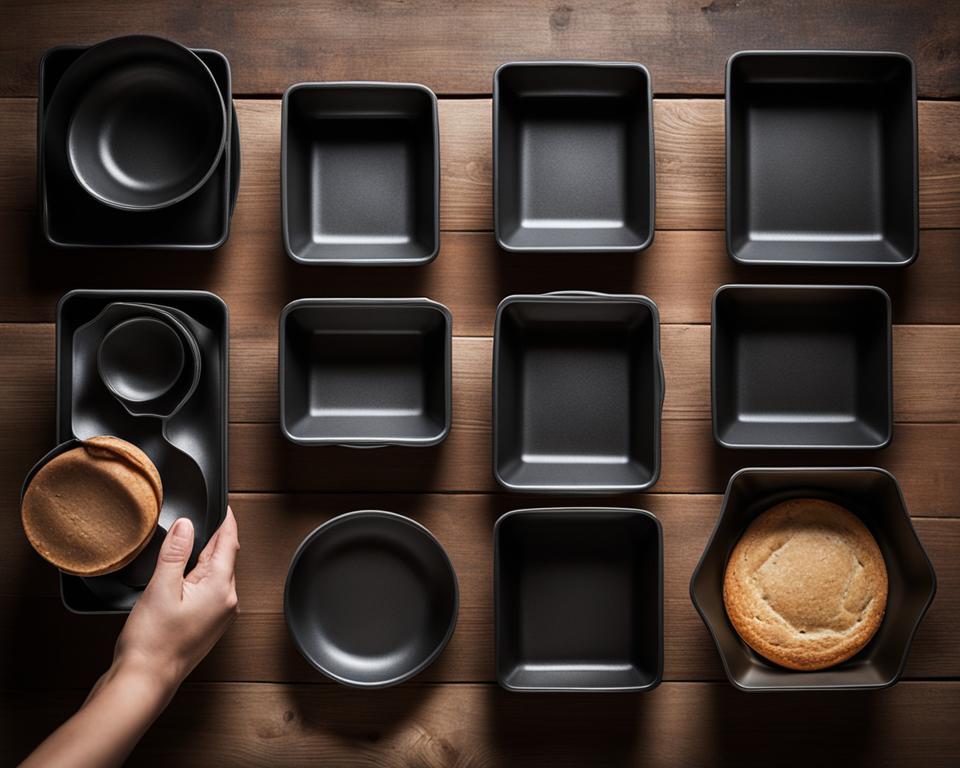
Conclusion
Embarking on a baking journey can be an exciting and fulfilling experience, especially for beginners. With these beginner-friendly baking tips and advice, you’ll have the knowledge and confidence to start creating delicious homemade baked goods. Remember to take your time and be prepared, carefully measure your ingredients, follow the recipe closely, pay attention to temperature, and become familiar with your oven.
By practicing and honing your baking skills, you’ll be able to produce consistently delectable treats. Don’t be discouraged if you encounter challenges along the way—baking is a learning process, and even the most experienced bakers make mistakes. Embrace the journey, enjoy the process, and don’t forget to have fun.
So, put on your apron, preheat that oven, and let your creativity shine. With patience, perseverance, and these valuable baking tips, you’ll soon be whipping up mouthwatering cakes, cookies, and breads that will delight your friends, family, and yourself. Happy baking!
FAQ
What is the most important tip for beginner bakers?
Take your time and be prepared. Baking requires preparation and following instructions carefully.
Why is it important to measure ingredients accurately?
Precise measurements are crucial for consistent and delicious results in baking.
Is it necessary to follow the recipe exactly?
Yes, especially for beginners. Well-tested recipes are designed to ensure the best results.
How does temperature affect baking?
Temperature plays a crucial role in achieving the desired texture and browning in baked goods.
Why is it important to know your oven?
Every oven is different, and understanding your oven’s quirks helps in making necessary temperature and time adjustments.
How can I avoid opening the oven door too much?
Excessive oven door opening can disrupt the baking process. Use the oven window and light to monitor progress.
What is the difference between warm and hot ingredients?
Warm ingredients should be comfortable to touch, while hot ingredients can affect the effectiveness of certain ingredients.
What type of baking pans should I use?
Invest in high-quality nonstick metal pans for even baking and easy release of baked goods.
What is a good starting point for beginners in baking?
Start with easy baking recipes and follow these tips to build basic baking skills and confidence.

